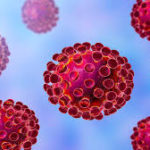
Obviously the impact of lockdown and social distancing has been serious for many of my readers, and I’ve struggled to think of what I could share that might help. Finally I think I’ve got something to say. Even as the world closes down around you, you have to stay open!
In my last scientific article on addiction and recovery, I set out a new and improved model of addiction (described in more detail here). I looked at addiction as a “narrowing” of the brain — a setting and solidification of neural networks focused on drug rewards — paralleled by a narrowing of the (available, meaningful) social environment.
This is not rocket science, or even brain science.
The main trouble with the “brain disease model” of addiction is that it ignores the massive impacts of the social environment. Yet we know that emotional challenges create the predisposition to later addiction. We know that the social environment (including one’s family history) matters hugely. We know that abuse (including emotional abuse) and neglect during our growing-up years are by far the best predictors of addiction in adulthood. The brain disease model simply can’t make sense of these facts. How could a brain disease develop from hard times growing up?
So in my model I emphasize that harmful social experiences have a shrinking or narrowing effect. If caregivers or peers make you feel off or wrong or insecure, or unable to trust, unable to just be, then you ingest what gives you the next best thing. Something that

soothes you and defines you. And then, as time goes by, you connect with people more shallowly, you connect with fewer people, you connect with fewer people who might actually love you — family, friends, lovers. That’s the outer garment of addiction: the thinning, the contraction, of the social world. And it parallels the “contraction” of available neural networks in the addict’s brain.